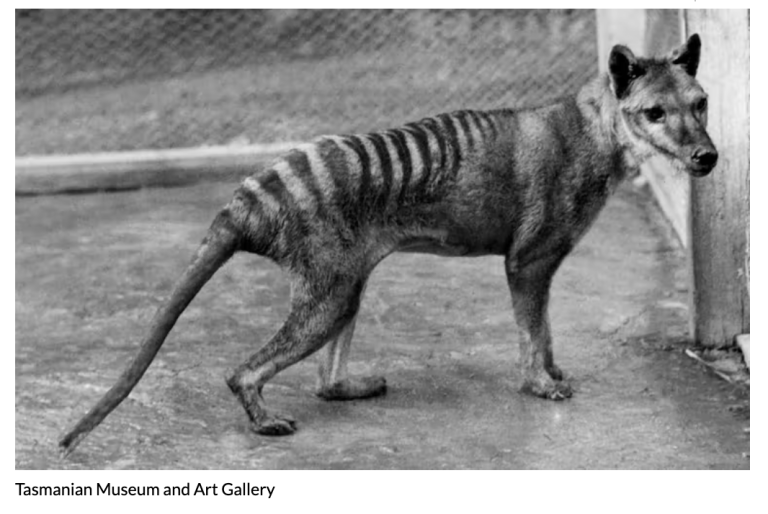Resurrecting the Thylacine?
This week, in his excellent blog series, ConservationBytes, Australian Ecologist Corey Bradshaw discusses new attempts to resurrect the extinct Tasmanian tiger, or Thylacine, which was hunted to extinction in Tasmania in the early years of the 20th Century. The blog publishes the opinions of 5 experts on the subject. Of these only the author himself is against the proposal.
Resurrecting extinct species is something that catches the imagination easily. What if we could simply atone for our past blunders by bringing back such animals as the Thylacine, or the woolly Mammoth, and just start over?
In addition to the points made by Bradshaw, one could argue that even if it were possible to produce perfect genetic reconstitutions, exhibiting sufficient diversity to seed a population, who would recreate the behavioural ecology these animals need to survive in their new world? Witness the depressingly high failure rate of other carnivore reintroductions, even when the species in question is extant and individuals have been painstakingly prepared over years for their new lives in the wild. A functioning Thylacine is rather more than a fresh bag of Thylacine DNA.
Let us not kid anyone, these hapless animals would simply be dystopic zoo creatures bred in a lab and displayed in the wild for conservation ‘success’ propaganda. Then, also, just imagine the new mantra of ‘Extinction is no longer forever’ – feeding straight into the hands of those who wish to conduct business as usual.
Protecting species is easy in theory. They simply need a fair share of the planet free from human impact and disturbance. It’s not rocket science, but perhaps that’s the problem…







